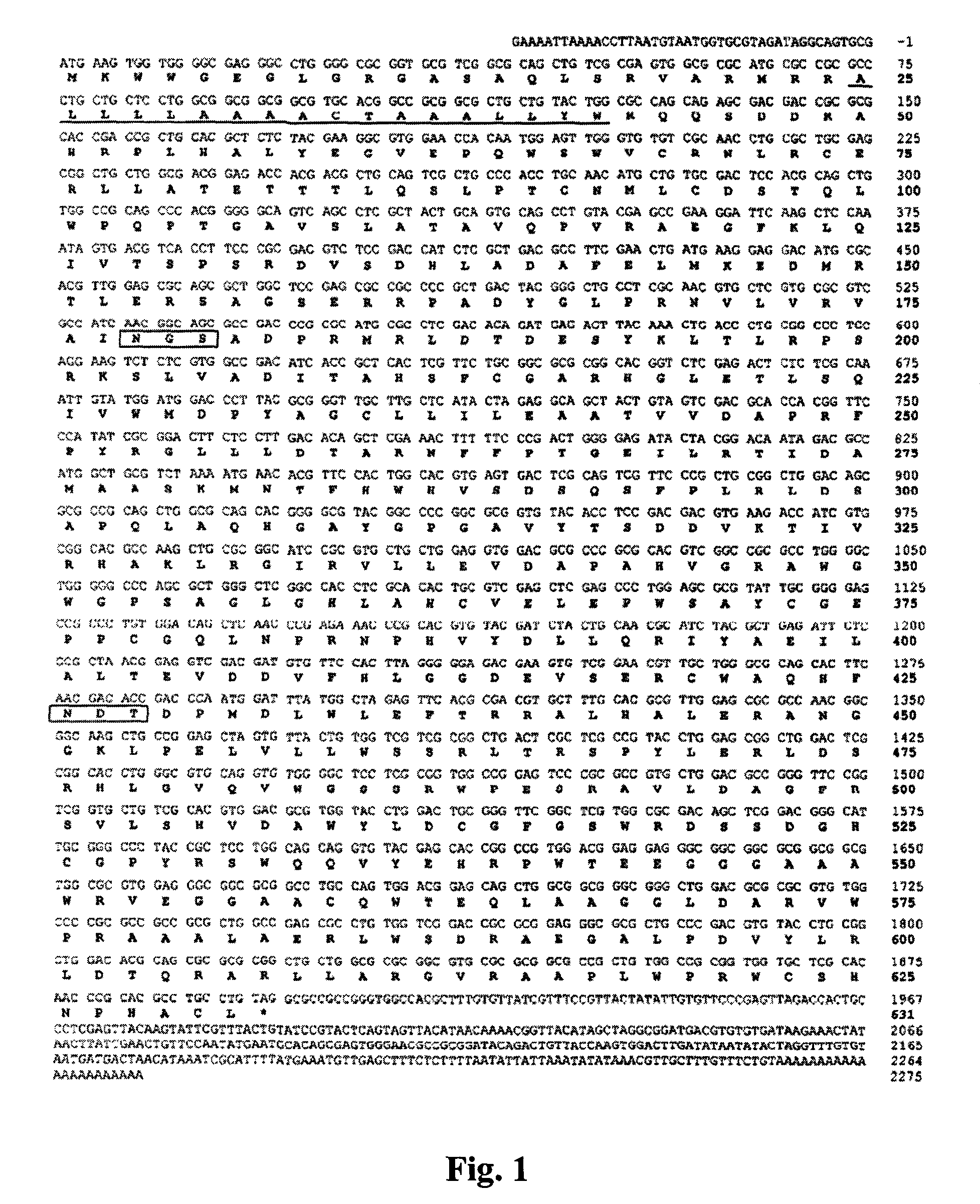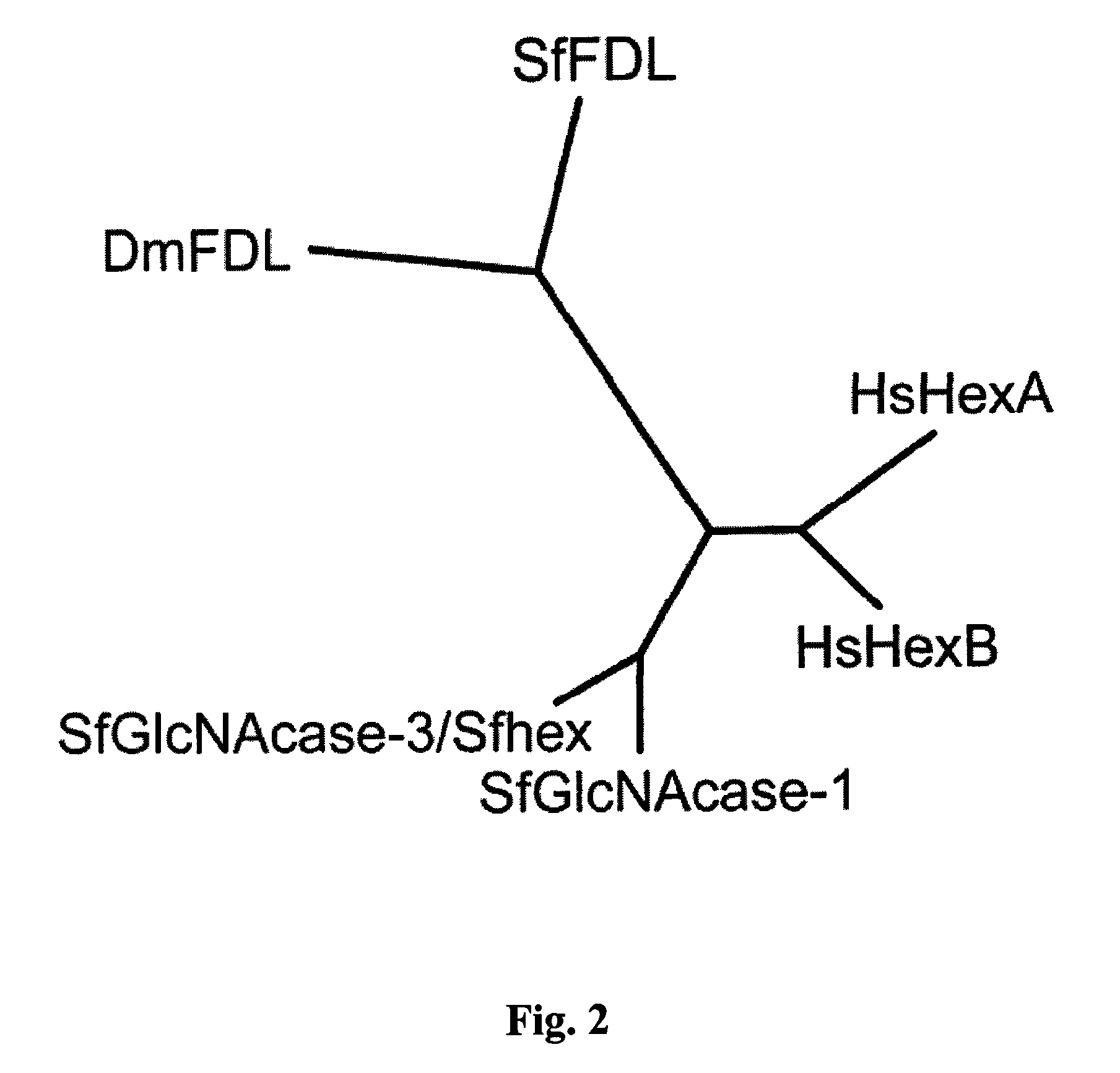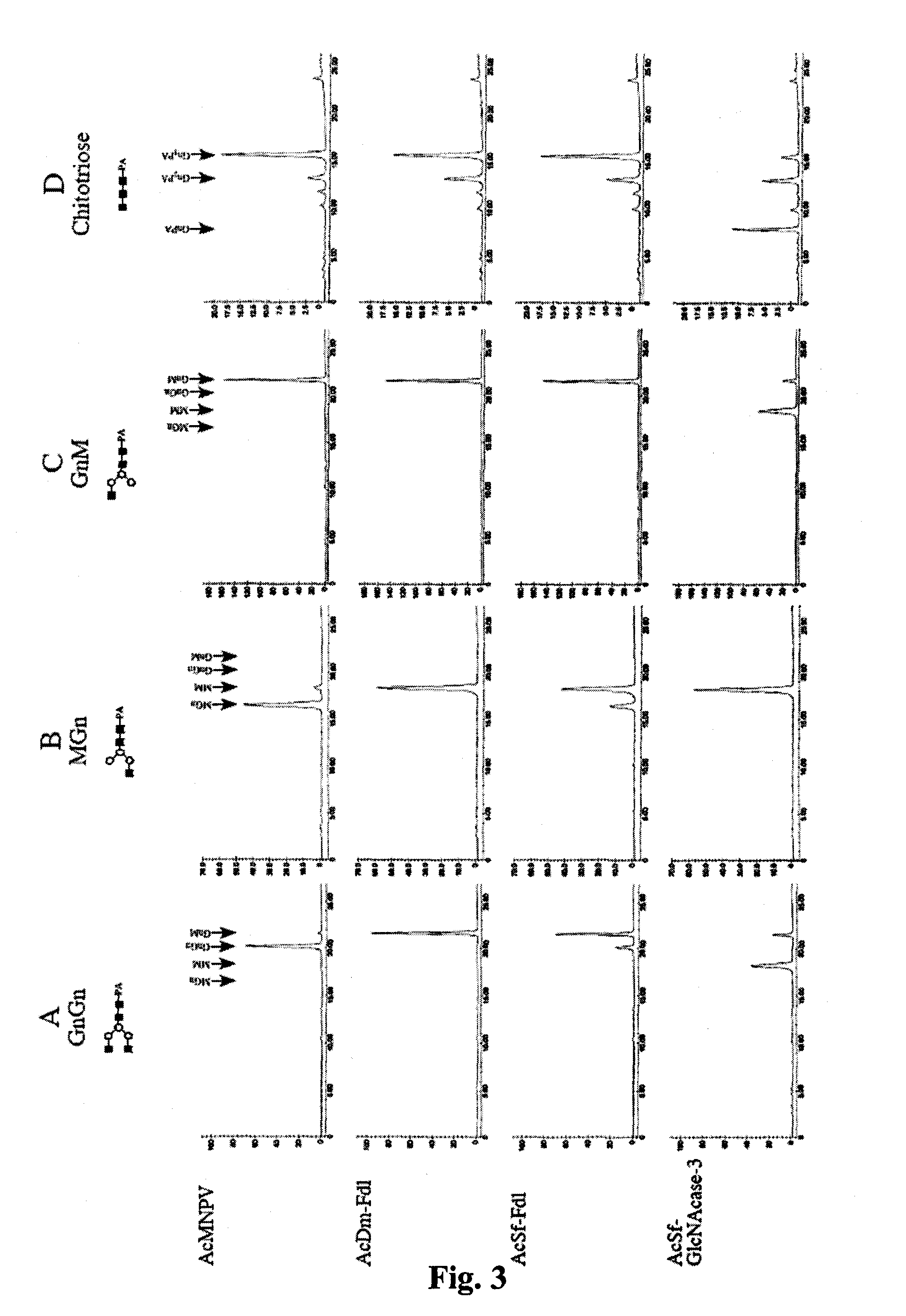Lepidopteran insect N-acetylglucosaminidase genes and their use in glycoengineering
a technology of n-acetylglucosaminidase and n-acetylglucosaminidase, which is applied in the field of molecular biology and protein production, to achieve the effects of processing -n-acetylglucosaminidase activity, low specificity, and low specificity
- Summary
- Abstract
- Description
- Claims
- Application Information
AI Technical Summary
Benefits of technology
Problems solved by technology
Method used
Image
Examples
example i
Cloning of a Novel Processing β-N-Acetylglucosamidase from SF9 Cells and Characterization Thereof
Isolation and Characterization of an fdl Gene Homolog from Sf9 Cells
[0107]Our effort to isolate an fdl gene homolog from Sf9 cells was informed and facilitated by the availability of genome sequence data from several insect species and also by our previous efforts to isolate the gene encoding the processing β-N-acetyl-glucosaminidase activity from this cell line. tBLASTn analysis of the A. aegypti, A. gambiae, A. mellifera, B. mori, D. pseudoobscura and T. castaneum genomes with the Dm-fdl gene as the query yielded exons from each species encoding peptides phylogenetically related to Dm-fdl (data not shown). We subsequently used a splice site prediction algorithm to join the relevant exons and identify open reading frames encoding at least partial, putative β-N-acetylglucosaminidases from each insect species. Importantly, a CLUSTAL-W alignment of the predicted products of these open read...
example ii
Cloning of the TnFDL and BmFDL Genes
Common Materials and Methods
[0123]All PCRs were carried out in a final volume of 50 μLs in 1× of Phusion™ buffer GC with 0.2 mM of each dNTP, 1 μM of each primer, 1 M betaine, 0.6 U of Phusion™ DNA polymerase (NEB, Ipswich, Mass.) and 1 μL of template, except where indicated otherwise. All PCRs were carried out in a GeneAmp Model 2400 thermal cycler (Eppendorf, Foster City, Calif.). DNA extraction from agarose gel fragments were carried out using the QiaQuick™ Gel Extraction Kit (Qiagen, Valencia, Calif.) according to the manufacturer's instructions and eluted into 50 μLs.
[0124]Sequences obtained from degenerate and semidegenerate PCRs, TOPO® clones and RACE reactions were analyzed and assembled into full-length mRNA and genomic DNA sequences using ContigExpress, a component of Invitrogen Vector NTI 10.3.0.
[0125]T. ni fdl
[0126]Degenerate PCR
[0127]Genomic DNA was isolated from T. ni cells (Tn-4h cell line) according to the method of Laird et al. (L...
example iii
Inhibition of Specific, Processing β-N-acetyglucosaminidase Activity by an Sf-fdl-Specific Double-Stranded RNA
[0145]If the Sf-fdl gene encodes the specific, processing β-N-acetylglucosaminidase activity in Sf9 cells, it should be possible to reduce this activity by RNA interference with Sf-fdl-specific double-stranded RNA. Towards this end, we constructed an immediate early expression plasmid encoding an inverted repeat sequence derived from a portion of the Sf-fdl coding sequence (FIG. 12) and used it to isolate a transformed Sf9 cell subclone, as described above. Microsomal membranes were then isolated from the parental cell line or the subclone and used for β-N-acetylglucosaminidase activity assays with GnGn as the substrate. HPLC analysis of the reaction products showed that the microsomal membranes from both the parental Sf9 cells the transformed subclone converted GnGn to GnM, but not detectably to MM or MGn (data not shown). Thus, in this examination of endogenous β-N-acetylg...
PUM
| Property | Measurement | Unit |
|---|---|---|
| final volume | aaaaa | aaaaa |
| volume | aaaaa | aaaaa |
| temperature | aaaaa | aaaaa |
Abstract
Description
Claims
Application Information
 Login to View More
Login to View More - R&D
- Intellectual Property
- Life Sciences
- Materials
- Tech Scout
- Unparalleled Data Quality
- Higher Quality Content
- 60% Fewer Hallucinations
Browse by: Latest US Patents, China's latest patents, Technical Efficacy Thesaurus, Application Domain, Technology Topic, Popular Technical Reports.
© 2025 PatSnap. All rights reserved.Legal|Privacy policy|Modern Slavery Act Transparency Statement|Sitemap|About US| Contact US: help@patsnap.com



